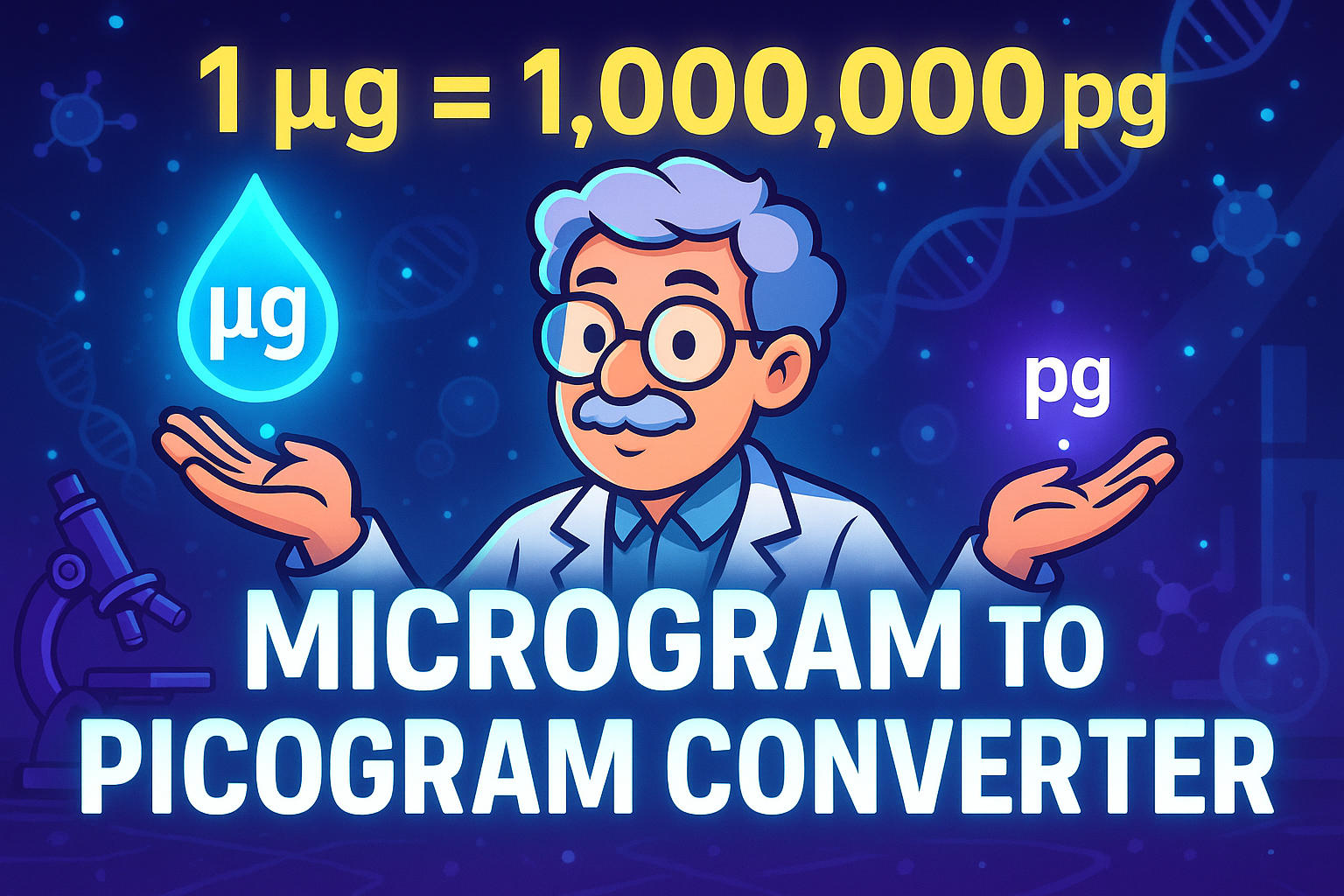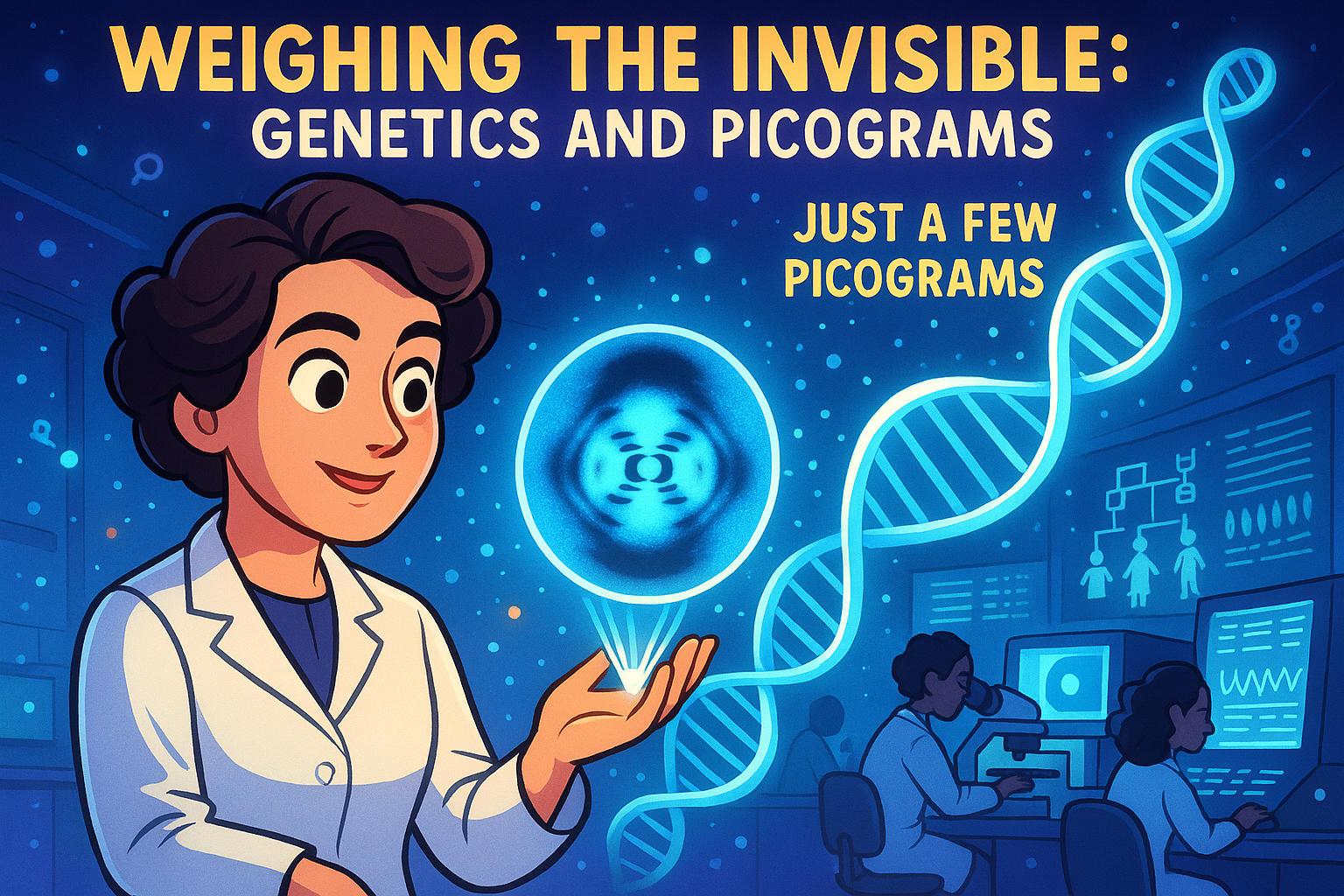microgram to picogram – How to convert mcg to pg
Looking to convert microgram to picogram? When dealing with extreme precision in chemistry, pharmacology, or biotechnology, even the tiniest measurement counts. Understanding how to convert mcg to pg helps scientists, researchers, and medical professionals make accurate calculations in microscopic quantities. Need a quick answer? Use our conversion tool to convert values instantly.

Micrograms and Picograms - What do you need?
A microgram (mcg) is a metric unit of mass equal to one-millionth of a gram.Micrograms are frequently used in medicine, nutrition, biology, and chemistry for extremely small doses and quantities. For reference, most daily vitamin recommendations—like folic acid and B12—are measured in micrograms.
A picogram (pg) is an even smaller metric unit. Picograms are often used in biomedical research, nanotechnology, and genomics—fields where precise molecular quantities matter.
For conversions at the nanogram scale, you might also check out our Grams to Nanograms Converter.
How to Convert Microgram to Picogram
To go the other way:
1 picogram = 0.000001 micrograms
For example, If a substance weighs 900,000 picograms, convert it to micrograms like this:
900,000 ÷ 1,000,000 = 0.9 micrograms
So, 900,000 pg = 0.9 mcg
For even more conversions between small metric units, try our full weight converter.
Did you know?
-
The synthetic opioid fentanyl is so potent that just 2 micrograms can be lethal. That’s why law enforcement and medical responders measure exposure in microgram-level precision.
-
DNA is incredibly light—just one picogram is enough to hold the genetic instructions for an entire human being.
-
In spaceflight nutrition, NASA carefully measures astronauts’ micronutrient intake in micrograms to avoid both deficiency and toxicity in zero gravity.
-
Scientists have developed sensors that can detect changes in weight at the picogram level—so sensitive they can “weigh” a single virus particle.
-
The thyroid hormone T3 is so active that a daily dose for some patients is less than 25 micrograms, highlighting the body's sensitivity to tiny chemical shifts.
-
In molecular biology, some mRNA vaccines use active ingredients measured in picograms to deliver life-saving genetic instructions to cells.
Weighing the Invisible: Genetics and Picograms
In the 1950s, molecular biologist Rosalind Franklin was working on X-ray diffraction images of DNA. Although the actual strands weighed just a few picograms, the data they carried shaped the foundation of modern genetics.
Today, genome sequencing labs use picogram quantities of DNA to run full analyses, generate family trees, and even solve cold cases. Without the ability to accurately measure substances this small, the entire field of modern genetics wouldn’t exist.
From decoding human life to advancing forensic science, the picogram proves that even the smallest mass can carry monumental value.

Conclusion
If your work deals with microscopic quantities, mastering the microgram to picogram conversion is essential. This knowledge helps you move confidently between units used in lab reports, scientific journals, and medical protocols.
For all your weight conversions—from picograms to tons—JetCalculator has you covered. Use our unit conversion or weight converter to convert anything, instantly.

